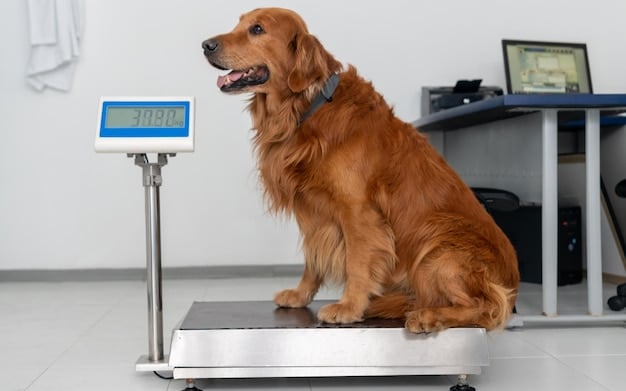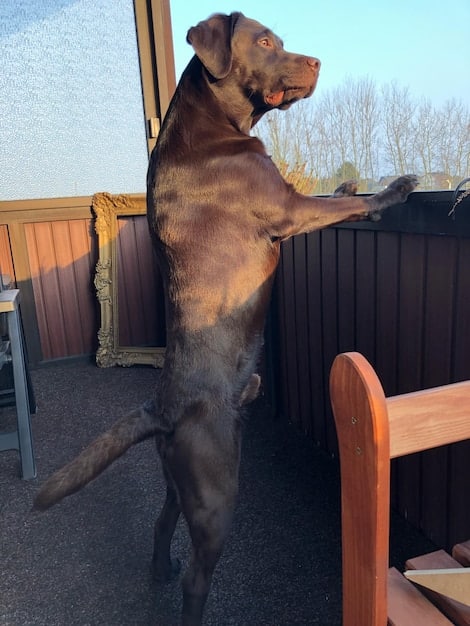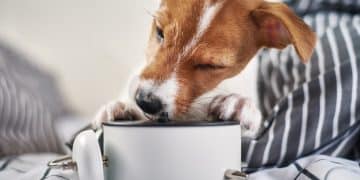Is Your Pet Overweight? A Guide to Calculating Ideal Weight & Nutrition

Determining if your pet is overweight involves evaluating their body condition score and calculating their ideal weight, followed by creating a tailored nutrition plan to help them achieve and maintain a healthy weight.
Is your furry friend carrying a little extra fluff? Wondering **is your pet overweight**? It’s a common concern among pet owners, and understanding how to assess their weight and create a proper nutrition plan is crucial for their health and well-being. Let’s dive in!
Identifying if Your Pet Is Overweight
The first step in addressing your pet’s weight is recognizing whether there’s an issue. Many pet owners unintentionally contribute to their pet’s weight gain through overfeeding or lack of exercise. So, how do you know if your beloved companion needs a weight check?
Body Condition Score (BCS)
The Body Condition Score (BCS) is a standardized method used by veterinarians to assess a pet’s weight. It involves evaluating the animal’s physical appearance and palpating (feeling) specific areas of their body.
- Visual Assessment: Look at your pet from above and from the side. A healthy animal should have a visible waistline when viewed from above. From the side, you should be able to see an abdominal tuck (an upward slope from the ribs to the hips).
- Palpation: Gently feel your pet’s ribs. In a healthy-weight animal, you should be able to feel the ribs easily with only a slight fat covering. If you have to press firmly to feel the ribs, your pet may be overweight.
- Veterinarian Consultation: Your vet can provide an accurate BCS assessment and offer personalized recommendations.
Regularly assessing your pet’s BCS helps you stay proactive about their weight management. This simple evaluation, combined with professional advice, can make a significant difference in your pet’s health.
Calculating Your Pet’s Ideal Weight
Understanding your pet’s ideal weight is essential for creating an effective weight management plan. Breed standards, body size, and overall health all play a role. Let’s explore how to determine what a healthy weight looks like for your furry friend.
Breed-Specific Weight Ranges
Each breed has a general weight range that serves as a guideline. However, individual variations exist, so it’s best to consider these ranges as a starting point. Consult with your veterinarian for breed-specific advice.

Using Online Calculators and Charts
Several online tools and charts can help estimate your pet’s ideal weight. These resources typically require you to input your pet’s breed, age, and current weight. Keep in mind that these tools offer estimates and should not replace professional veterinary advice.
Regardless of the method, knowing your pet’s ideal weight range provides a concrete target for their weight management efforts. Combining this knowledge with regular vet check-ups ensures a comprehensive approach to their health.
Developing a Healthy Eating Plan for Weight Loss
Once you’ve determined that **is your pet overweight** and calculated their ideal weight, the next step is developing a healthy eating plan. This involves adjusting their diet and feeding habits to promote gradual and sustainable weight loss.
Choosing the Right Food
Selecting the appropriate food is fundamental to a weight loss plan. Look for foods specifically formulated for weight management, as they typically contain fewer calories and more fiber.
- High-Protein, Low-Fat Content: Foods high in protein help your pet feel fuller for longer and support lean muscle mass.
- Fiber-Rich Options: Fiber adds bulk to the diet, promoting satiety and aiding digestion.
- Avoid Fillers: Choose foods that avoid excessive fillers like corn, wheat, and soy, as these can add empty calories.
Portion Control and Feeding Schedules
Controlling portion sizes and establishing a consistent feeding schedule are crucial for preventing overeating. Measure out each meal using a standard measuring cup to ensure accuracy. Divide the daily ration into multiple small meals rather than one large feeding.
By carefully selecting the right food and implementing strict portion control, you can create a foundation for successful weight loss. Consistency and patience are key, as gradual progress is more sustainable and healthier for your pet.
The Importance of Exercise in Weight Management
While diet plays a significant role in weight loss, exercise is equally important for overall health and fitness. Regular physical activity helps burn calories, build muscle mass, and improve cardiovascular health.
Tailoring Exercise to Your Pet’s Needs
Consider your pet’s age, breed, and physical condition when designing an exercise plan. Start slowly and gradually increase the intensity and duration of the activity.

Fun Activities to Keep Your Pet Active
Incorporate activities that your pet enjoys to make exercise more engaging and sustainable.
- Walks: Daily walks are a simple yet effective way to increase physical activity.
- Playtime: Games like fetch, tug-of-war, and puzzle toys stimulate both the mind and body.
- Swimming: If your pet enjoys water, swimming is a low-impact exercise that’s gentle on the joints.
Exercise is not just about weight loss; it enhances your pet’s quality of life. Regular physical activity helps improve their mood, reduce boredom, and strengthen the bond between you and your furry friend.
Monitoring Progress and Adjusting the Plan
Weight management is an ongoing process that requires regular monitoring and adjustments. Tracking your pet’s progress helps you identify what’s working and make necessary changes to their diet and exercise plan.
Keep a Weight Journal
Record your pet’s weight and body condition score at regular intervals (e.g., weekly or bi-weekly). Note any changes in their diet, exercise routine, or overall health. This journal will provide valuable insights into their weight loss journey.
Regular Veterinary Check-Ups
Schedule regular check-ups with your veterinarian to assess your pet’s progress and address any concerns. Your vet can offer personalized advice, monitor their health, and make informed recommendations.
Monitoring your pet’s progress and adjusting their plan accordingly ensures that their weight management efforts are both safe and effective. Continuous evaluation and collaboration with your vet are key to achieving long-term success.
Potential Health Risks of Pet Obesity
The health effects of obesity can be serious, so if **is your pet overweight** is a question you are asking, it is important to take action. An overweight pet is prone to a number of health problems that can shorten their lifespan and reduce their quality of life.
Common Health Issues
Obesity in pets has been linked to a range of health issues, including:
- Diabetes: Excess weight can lead to insulin resistance and the development of diabetes, particularly in cats.
- Arthritis: The added stress on joints can accelerate the development of arthritis and other degenerative joint diseases.
- Heart Disease: Obesity increases the risk of heart problems, such as cardiomyopathy and hypertension.
Understanding the potential health risks of pet obesity can be a powerful motivator for change. By prioritizing your pet’s weight management, you’re investing in their long-term health and happiness.
| Key Point | Brief Description |
|---|---|
| ⚖️ Body Condition Score | Assess your pet visually and by touch to determine if they’re overweight. |
| 🥗 Healthy Eating Plan | Choose high-protein, low-fat food and control portion sizes. |
| 🐕 Exercise Importance | Regular physical activity helps burn calories and improve cardiovascular health. |
| 📝 Monitoring Progress | Keep a weight journal and schedule regular vet check-ups to track progress. |
FAQ Section
▼
You can consult breed-specific weight charts, use online calculators, and consider the Body Condition Score. However, consulting your vet is the best approach to get a precise determination of your pet’s ideal weight.
▼
Signs include difficulty feeling their ribs, loss of a defined waistline, reduced activity levels, and excessive panting. These indicators suggest your pet may be carrying excess weight and should be evaluated.
▼
Look for pet foods that are high in protein, low in fat, and rich in fiber. These formulations help your pet feel full while consuming fewer calories, aiding in their weight loss journey.
▼
Aim for at least 30 minutes of exercise each day, adjusting based on your pet’s breed, age, and health condition. Regular physical activity is crucial for burning calories and improving overall fitness.
▼
Yes, pet obesity is associated with several health risks, including diabetes, arthritis, heart disease, and reduced lifespan. Managing their weight is crucial for their long-term health and happiness.
Conclusion
Addressing the question of **is your pet overweight** requires a multifaceted approach, including assessing their body condition, calculating their ideal weight, and creating a balanced diet and exercise plan. By staying proactive and consulting with your veterinarian, you can help your pet achieve and maintain a healthy weight, ensuring a happier and longer life together.





